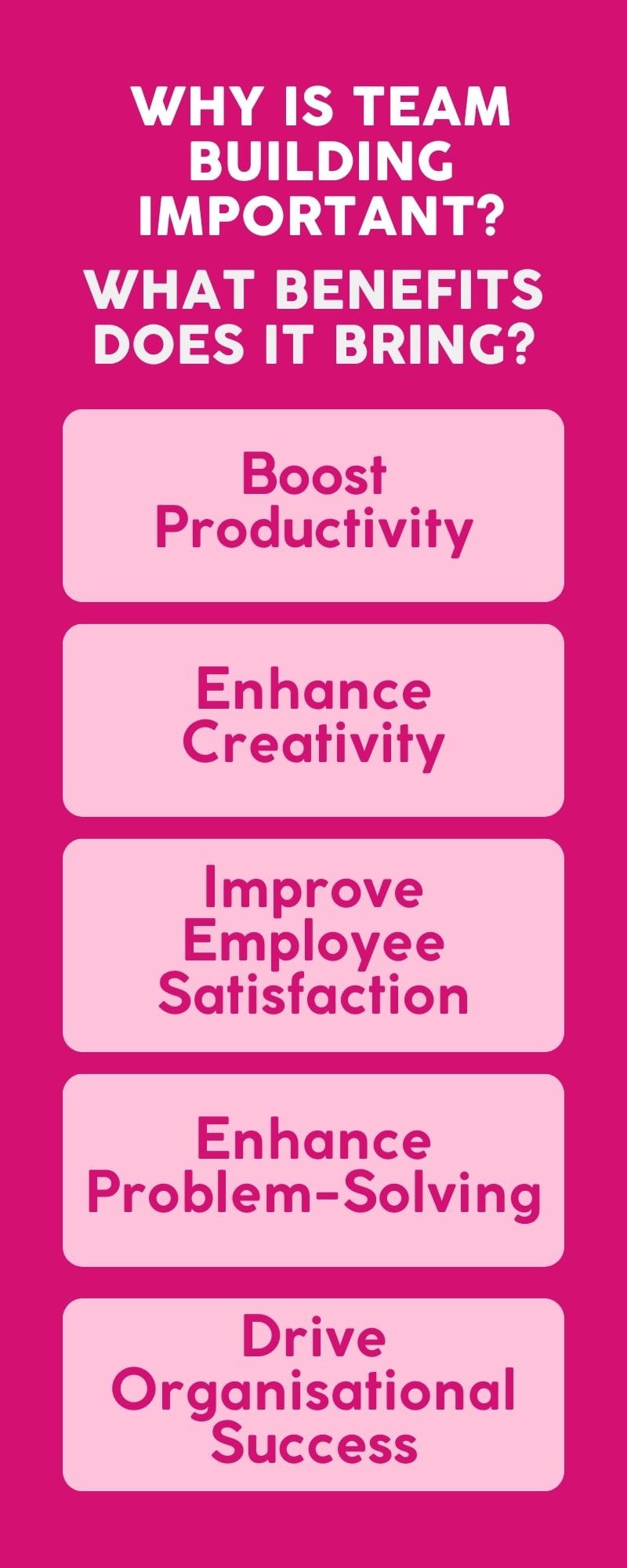The Importance of Team-Building
Before we dive into the 15 principles of team-building, let's first understand why it's essential to invest time and resources in this endeavour. Teams are the backbone of any organisation, and their ability to work cohesively and efficiently directly impacts performance, productivity, and ultimately, profitability.

Now that we understand the importance of team building, let's explore the 15 essential principles that can help you build and maintain high-performing teams.
Principle 1: Establishing Trust
Trust is the foundation of any successful team. It's essential to create an environment where team members trust one another's intentions, capabilities, and reliability. Trust fosters collaboration and open communication, allowing for the free flow of ideas and feedback. Building trust takes time and effort but is crucial for long-term team success.
Example: Google's Project Aristotle found that the most successful teams had one common factor—psychological safety, which is closely linked to trust. Teams that felt safe to take risks without fear of criticism or ridicule performed better.
Principle 2: Embracing Diversity
Diverse teams bring a variety of skills, perspectives, and experiences to the table. Embracing diversity not only leads to better decision-making but also enhances creativity and innovation. It's essential to create a culture where differences are celebrated and inclusion is a priority.
Example: Companies like IBM actively promote diversity and inclusion through initiatives like "Reinventing Inclusion," which focuses on embracing all dimensions of diversity, including gender, race, and age.
Principle 3: Fostering Open Communication
Open and transparent communication is a cornerstone of effective team building. Encouraging team members to express their thoughts, concerns, and ideas creates an atmosphere of collaboration. It's important to establish channels for both formal and informal communication.
Example: Atlassian's team playbook includes exercises like "Retrospective" to encourage open discussions about what's working and what needs improvement in team dynamics and processes.
Principle 4: Encouraging Collaboration
Collaboration is at the heart of successful team building. Encourage team members to work together, leveraging their collective strengths. Collaboration often leads to innovative solutions and better outcomes.
Example: The success of NASA's Apollo 11 mission to the moon was a result of seamless collaboration among scientists, engineers, and astronauts working together towards a common goal.
Principle 5: Building Accountability
Accountability ensures that team members take ownership of their responsibilities and deliver on their commitments. Establish clear roles and expectations, and hold team members accountable for their actions.
Example: Netflix has a culture of "freedom and responsibility," where employees are given the freedom to make decisions but are also held accountable for the outcomes.
Principle 6: Leading by Example
Leaders play a pivotal role in setting the tone for a team. Leading by example means demonstrating the behaviour, values, and work ethic expected from team members. It inspires trust and respect.
Example: Microsoft's CEO, Satya Nadella, is known for his leadership by example, emphasising the importance of empathy and continuous learning within the organisation.
Principle 7: Embracing Failure as a Learning Opportunity
Failure is not the end but an opportunity for growth. Encourage a culture where team members are not afraid to take risks and learn from their mistakes. Innovation often arises from learning through failure.
Example: Amazon's culture encourages experimentation and accepts that some initiatives will fail, as long as they lead to valuable learning.
Principle 8: Promoting Continuous Learning
In a rapidly evolving business environment, continuous learning is essential. Encourage team members to acquire new skills and knowledge. Provide opportunities for training and development.
Example: Facebook offers its employees access to resources like "Facebook Learning" to facilitate continuous learning and skill development.
Principle 9: Celebrating Success
Recognise and celebrate achievements, both big and small. Acknowledging success boosts team morale and motivation. It's important to create a culture of appreciation.
Example: Apple celebrates the launch of new products with events that showcase the achievements of the teams behind them.
Principle 10: Focusing on Long-Term Goals
Set clear, long-term goals that align with the organisation's mission and vision. Teams perform better when they have a shared sense of purpose and direction.
Example: Tesla's ambitious goal of accelerating the world's transition to sustainable energy provides a clear long-term focus for its teams.
Principle 11: Defining Roles within the Team
Clearly define the roles and responsibilities of each team member. This reduces confusion, minimises conflicts, and ensures that everyone knows their contribution to the team's success.
Example: The U.S. military uses a strict chain of command and clearly defined roles to ensure effective teamwork and mission success.
Principle 12: Regularly Sharing Expertise
Encourage team members to share their expertise and knowledge. When team members learn from each other, it strengthens the overall capabilities of the team.
Example: The Agile methodology promotes knowledge sharing through practices like pair programming, where two developers work together to solve problems and share knowledge.
Principle 13: Supporting Each Other
In high-performing teams, members support each other both personally and professionally. This creates a sense of camaraderie and helps in overcoming challenges.
Example: Southwest Airlines is known for its supportive culture, where employees help each other to deliver excellent customer service.
Principle 14: Creating Synergy
Synergy is the result of team members working together in harmony, where the whole is greater than the sum of its parts. Encourage collaboration and cooperation to achieve synergy.
Example: Pixar's creative teams work together closely to develop groundbreaking animated films, where each member's contribution enhances the final product.
Principle 15: Motivating Innovation
Foster a culture of innovation where team members are encouraged to generate new ideas and solutions. Innovation is often the key to staying ahead in a competitive market.
Example: Google's "20% Time" policy allows employees to spend a portion of their workweek on projects of their choosing, encouraging innovation and creativity.
Conclusion
Building high-performing teams is an ongoing process that requires dedication, commitment, and continuous improvement. By embracing the 15 principles of team building outlined in this article, your organisation can create teams that not only meet but exceed expectations. Remember that successful teams are built on trust, communication, accountability, and a shared vision. As you implement these principles, you'll be on the path to unlocking the full potential of your teams and achieving greater success in your business endeavours.
